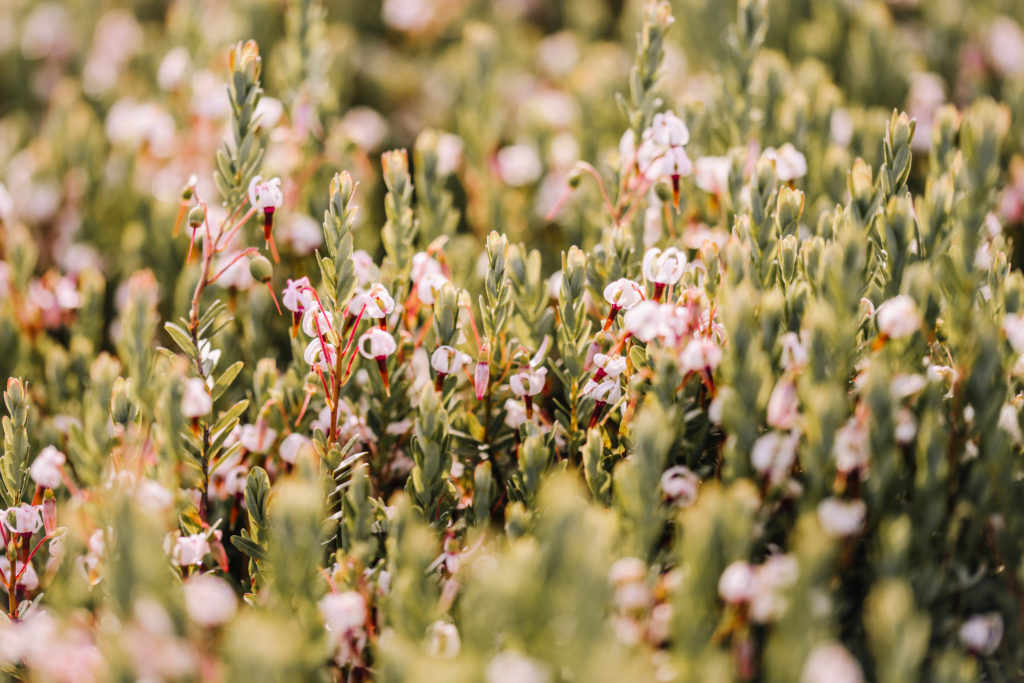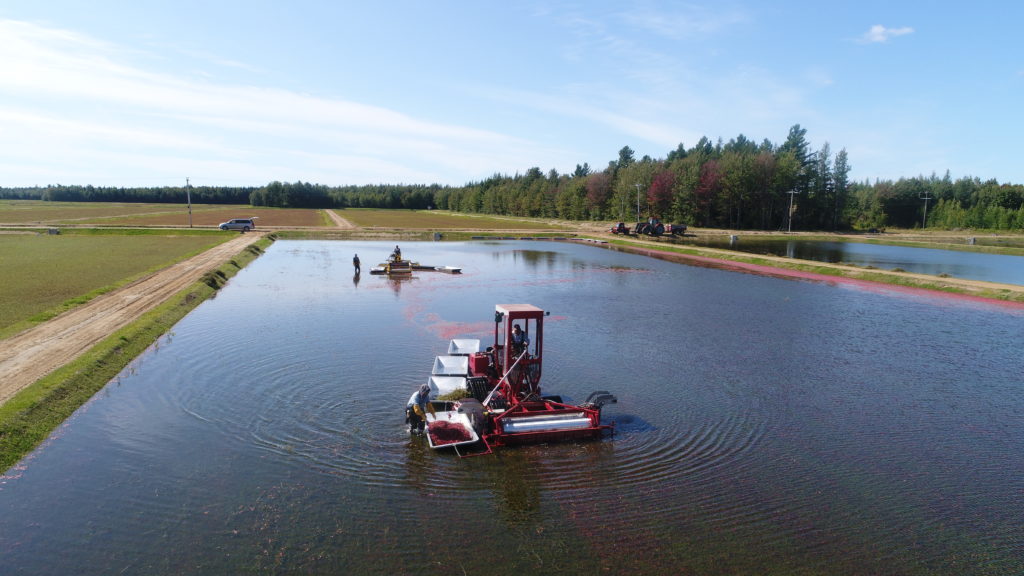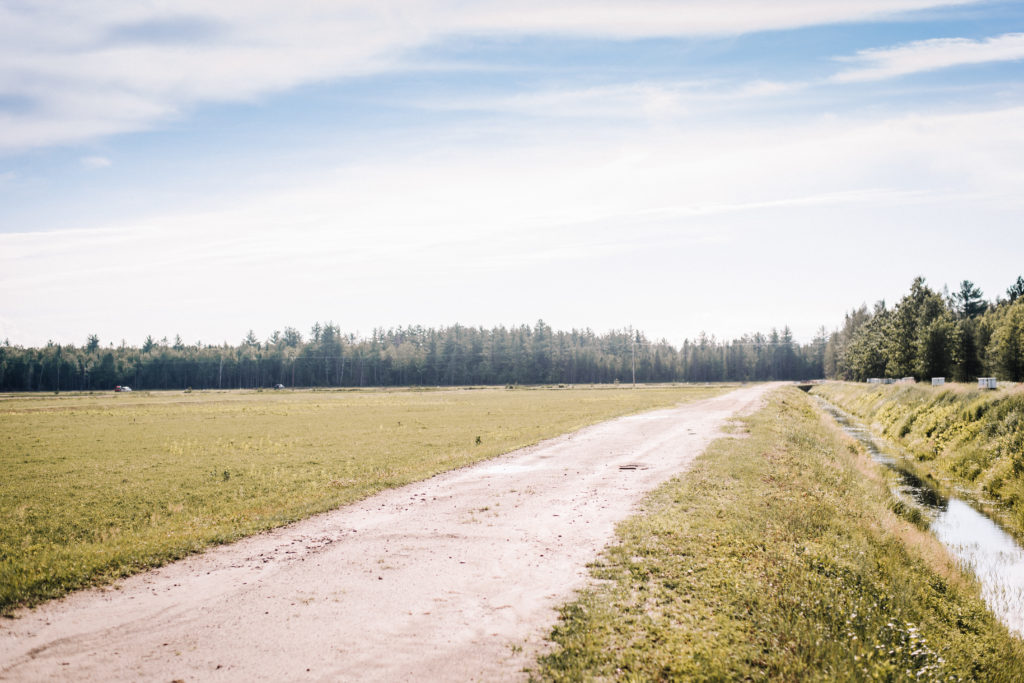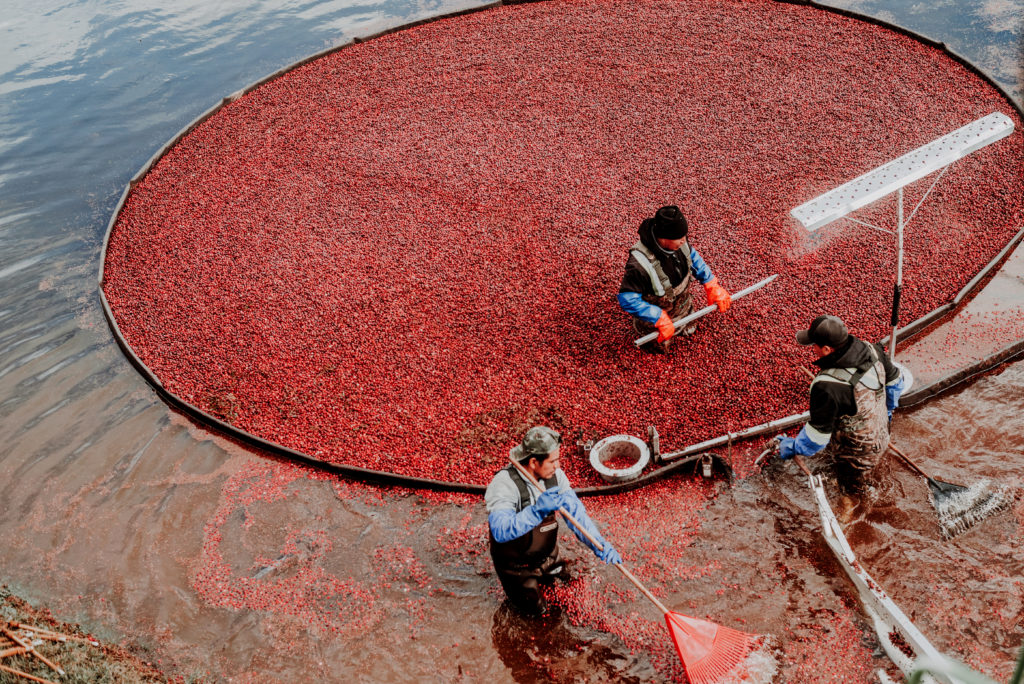Are you a fan of the delicious ruby-red berries from Quebec? Tasty in all kinds of sauces, these berries are quite difficult to grow. Patience Fruit & Co reveals 4 secrets about cranberry cultivation to help you better understand their growing process, from field to table!
Flowering and pollination
The flowering period of the cranberry plant runs from May to September. This is when pollination occurs. This step is crucial for the development of the fruit, because without pollination, there are no berries!
This is made possible through the work of the honey bees, as well as that of the bumblebees, which also participate in blueberry cultivation. To allow for the pollination of the cranberry flowers, we rely on beekeepers who provide hives. These are placed near bodies of water so that the precious bees can easily quench their thirst.
In addition, to offer the bees a varied diet, islands with flowers are present on the organic farms run by Patience Fruit & Co. These also attract natural pollinators. Some farmers also leave their field dykes in their wild state. Natural flowers grow there and offer the bees a variety of pollen, which ensures healthier hives.
Meticulous water management throughout the year
When it comes to cranberry cultivation, water is of the utmost importance. In addition to the flooding during harvest, the fields must also be submerged in the winter to protect the buds from frost. All this work requires intensive water management.
As pioneers in cranberry production, Fruit d’Or farmers have carried out advanced research to optimize water management as much as possible. They mostly have tension sensors in the ground. That way, they can better manage the amount of water needed for irrigation.
In addition, Organic farms all function as closed circuits. Growers recover water from rain or snowmelt. This water is contained in lakes near the fields. Irrigation allows the water to be redirected to the fields to water the plants in case of drought, to ward off insects, or during the harvest.
Cranberry cultivation is one of the few to have so much water management monitoring and technology!
Intensive monitoring of the insects in the fields
As you can see, cranberry growing takes a great deal of attention. In addition to water management, it requires enhanced insect monitoring, especially for organic fields!
The flooding will intervene again in the spring to remove an insect that has the nasty habit of ravaging the crops: the blackheaded fireworm.
Thanks to the flooding of the fields, the harmful larvae are neutralized. However, it does not harm other insects such as spiders, which are useful for cranberry cultivation!
The flooding of the fields for the harvest
Contrary to popular belief, cranberries don’t grow underwater! The iconic images of submerged cranberry fields come from the fact that the fields are flooded at harvest time.
As soon as the fruits have ripened, flooding is used to make the harvest easier. In fact, since cranberries have the unique characteristic of floating, farmers use a thresher to shake up the water, which causes the berries to come loose. They then naturally rise to the surface and are gathered.
This technique helps growers save a considerable amount of time and labour.
Berries harvested with love, devotion, and patience
Patience Fruit & Co is proud to produce organic Quebec cranberries grown with gentleness, patience, and respect. From September to December, it’s cranberry season! Enjoy our fresh cranberries or try our dried cranberries in your favourite recipes the rest of the year.






